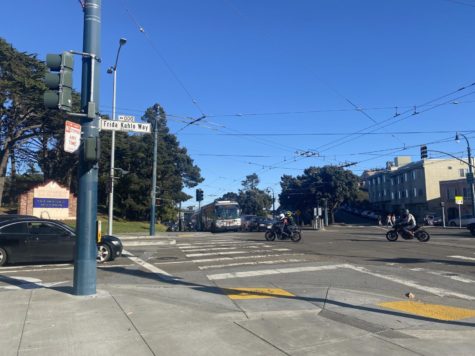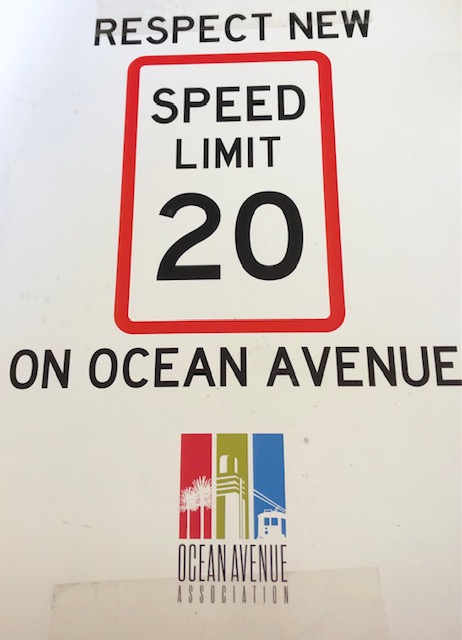Pedestrian safety measures planned for Ocean-Geneva corridor
The new speed limit on Ocean Avenue is now 20 miles per hour.
March 10, 2022
Adjustments to the Frida Kahlo Way-Ocean Avenue- Geneva Avenue intersection and a reduction of the speed limit along Ingleside’s stretch of Ocean Avenue are to come in the near future as San Francisco aims to improve pedestrian safety, accessibility, and comfort for those traveling along Ocean Avenue.
The San Francisco Municipal Transportation Agency (SFMTA) has planned to add a protected bike lane, a change in traffic signal timing and a reconfigured bus stop at the Frida Kahlo Way-Ocean Avenue-Geneva Avenue intersection. There are also plans for transit travel time improvements on eastbound Ocean Avenue and safety changes for walking and biking on Frida Kahlo Way.
“Ocean Avenue and Geneva Avenue east of the intersection are on San Francisco’s Vision Zero High-Injury Network – the 12 percent of streets that account for over 70 percent of severe and fatal traffic collisions and generally the focus of SFMTA traffic safety efforts,” said Mark Dreger, the Project Manager for the Frida Kahlo-Ocean-Geneva (F.O.G) quick-build project.
“We know there are several deficiencies at the intersection through past planning efforts… In short, the intersection serves many purposes yet is not serving anyone particularly well,” added Dreger.
The planning and the conceptual design for this project began in 2019 up until fall of 2020. Public engagement happened in the winter of 2020 through 2021; then in spring of 2021 the recommended design was introduced. Currently, the project has not been started and is expected to begin in early 2022 when funding and staffing become available.
Along with these adjustments comes a decreased posted speed limit along Ocean Avenue of 20 miles per hour in early January.
The speed limit will decrease from 25 to 20 miles per hour in sections of Ocean Avenue from Geneva Avenue to Victoria Street and Junipero Serra Boulevard to 19th Avenue, thanks to the passage of California Assembly Bill 43.
This bill—which allows local jurisdictions to reduce speed limits in key areas—was implemented in order to combat San Francisco’s high rate of traffic- related fatalities. According to the San Francisco City Performance Scorecards, the website reports that as of December of 2021, there were 27 traffic fatalities in the city — 32 fatalities being the highest in 2016.

San Francisco has already planned to lower the speed limits of seven busy street corridors throughout the city in order to achieve their Vision Zero policy. The policy was implemented in 2014 and its goal is to erase all traffic deaths on San Francisco streets by 2024. With this policy, the city believes that reducing the speed limit can help achieve Vision Zero goal.
With these changes, San Francisco’s Ocean Avenue is making progress towards the Vision Zero policy by making its streets safer for pedestrians and adjusting traffic conditions.

